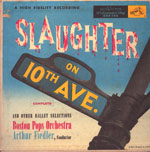Is This Uncool? | |

| Music books are difficult beasts. How do you pitch something that's about one medium in another which is entirely different? And how do you gauge the level of, for want of a better term, obscurity or obviousness? It's this last one that intrigues me. How obscure do you go? How far from the mainstream do you dare to wander if you accept that part of the whole point of writing a book about music in the first place is that you want to sell copies and hey, maybe even make a bit of cash (chance would be a fine thing). It's something that struck me when I picked up a copy of Gary Mullholland's This Is Uncool. Proclaiming itself as being about 'the 500 greatest singles since Punk and Disco', Mulholland's book is a fine example of treading that line between obscurity and mainstream. It doesn't do it very well, of course, but maybe that's more my problem than anything else. You see, I think that This Is Uncool is a perfect example of a strata of Pop that I really withdraw violently from and that really is to me a symptom of the late '80s and early '90s. It's that just-sub mainstream style that attempts to fuse a love for mainstream chart Pop with, for want of a better word, the 'popular' and most obvious end of subcultures. And as I say, maybe this is my problem, but I find it vaguely irritating, ingratiating and, well, rather pointless trying to make out that singles by, say, Josef K and Take That are in any way connected other than through a shared medium. Maybe I'm labouring the point, maybe I'm missing it entirely. I don't know. All I know is that really, I just don't need yet another list (and a book like this is essentially a list, isn't it?) of the usual suspects as laid down by common media consensus over the past quarter decade. I don't need yet another list telling me that Joy Division, The Smiths, The Sex Pistols, Nirvana, blah blah blah, made all the great 'rock' records of this time, and that the best 'dance' records came out of people like Public Enemy, Massive Attack, various faceless Detroit technoheads, Snoop Doggy Dog and Dr Dre. I could get all that shit wheeled out for me every month in Q if I was really bothered. And there's the crux, really, isn't it? Because This Is Uncool is clearly pitched at the Q readership; at the segment of the consumer market that grew up as my peers and who constantly poured scorn on my too-obscure tastes, my perceived wilful disinterest in anything that made the charts and became 'popular'. Which makes it all sound terribly petty and personal, which it is and of course is as it should be, but still... I can't help seeing this book and the kind of cultural identity it peddles as a kind of false victory for some hazy 'alternative' style; a style of smug holier-than-thou preening that is in reality incredibly condescending and arrogant. But whatever... |

|
Better by far is 45RPM (Princeton Architectural Press). Edited by Spencer Drate and with essays by, amongst others, Roger Dean and Eric Kohler, this book for me succeeds where Mullholland's fails. Maybe it's simply to do with words, or the general lack of them. Because really, by focusing very simply on presenting a visual history, 45RPM manages to get to the heart of celebrating the very thingness of the 7 inch record. There are no opinions here about the worth of the music, no attempt to make a case for any of these being 'great records', even though there's no question that many of them are. Indeed, there's not even much opinion about the worth of the designs of the collected sleeves; but what there is, in spades, is the space to dream, to reflect, to imagine or remember what the records that nestle in these sleeves sound like. Admittedly, much of this is for me about nostalgia. Looking through the pages of '50s covers for Sinatra and Elvis EPs, or the great 'Sax In Silk' or 'Slaughter on 19th Ave' takes me back to my earliest musical memories; of digging out my Mom and her sister's collections and playing them on the old red Marconiphone record player, a bunch of 7"s stacked high on the spindle and these thin reedy sounds coming out of the single speaker. Wow. And similarly then through the '70s and '80s, and seeing the sleeves that used to decorate the walls of Speed, the only record store in my old home town and which I was too scared to go too much because hey, after all I was weedy and didn't know shit about Punk Rock, but that's a whole other story. Whenever I did sneak in, however, I thought those wall displays of 7" singles were just the most glamorous thing ever, and isn't that something that's missing from record stores these days? Or is it just my age? Much of the appeal of this book too though is the true eclecticism of the collected artefacts: Al Green, Elvis, Devo, Grand Funk, Migala, Steroelab, PiL, Buzzcocks, Gerry Rafferty, Mingus, Blue Cheer, Donovan, Tsunami, Velocity Girl, The Majorettes, Beatles, Stones, Stan Getz, Section 25, Polvo... and a whole host of others are all here in their mixed up glory. Best double page for me is The Jasmine Minks' 'What's Happening' alongside Scars' 'Love Song' but of course that's just me. Everyone will find their own gems here that will make them leap in delight. For anyone who ever felt the thrill of simply holding a seven inch single, 45RPM is a book is for you. For those who only ever felt a thrill listening to one, well, you might find more in This Is Uncool than I did. Just don't bank on it. © 2002 Alistair Fitchett |